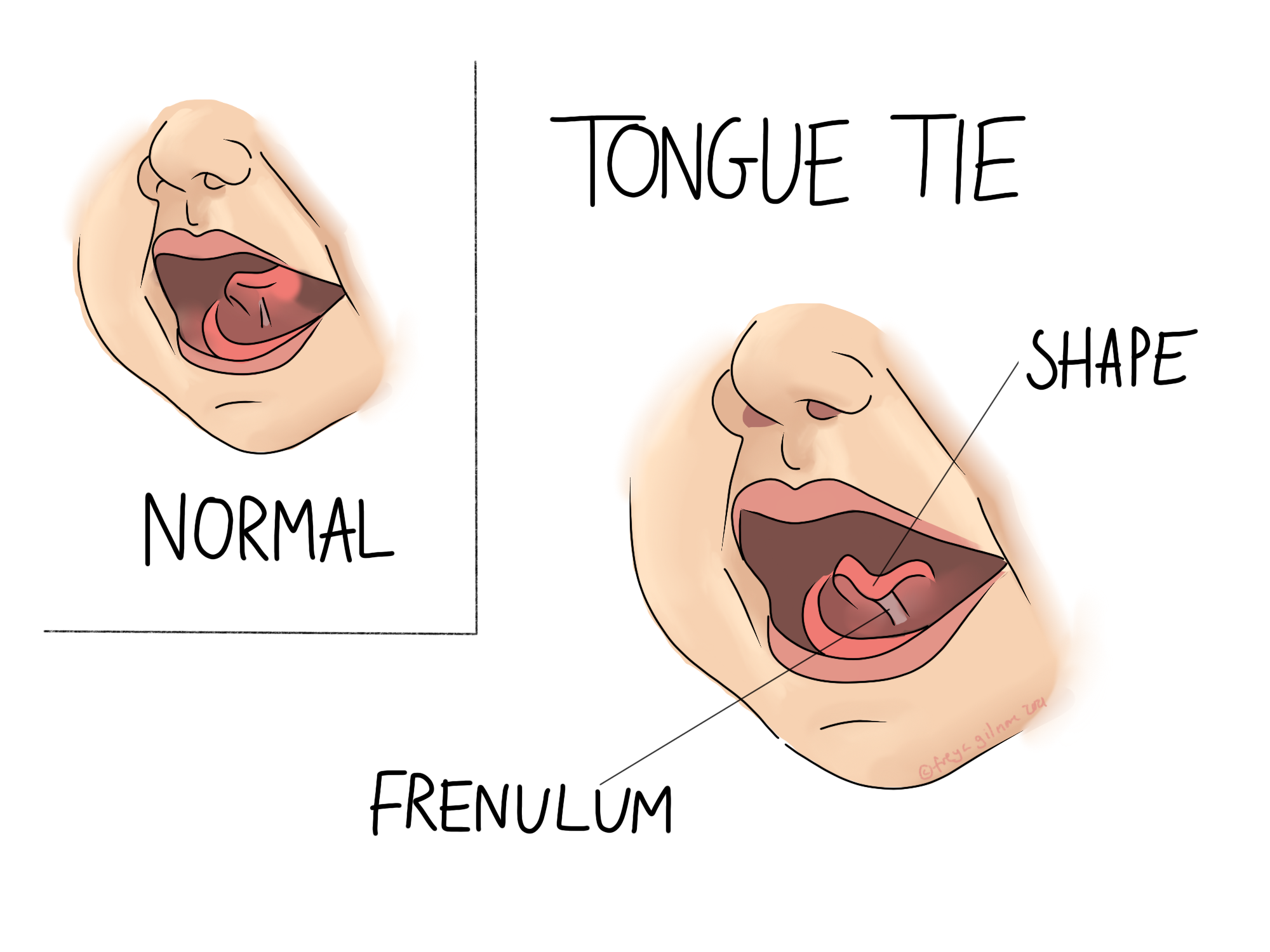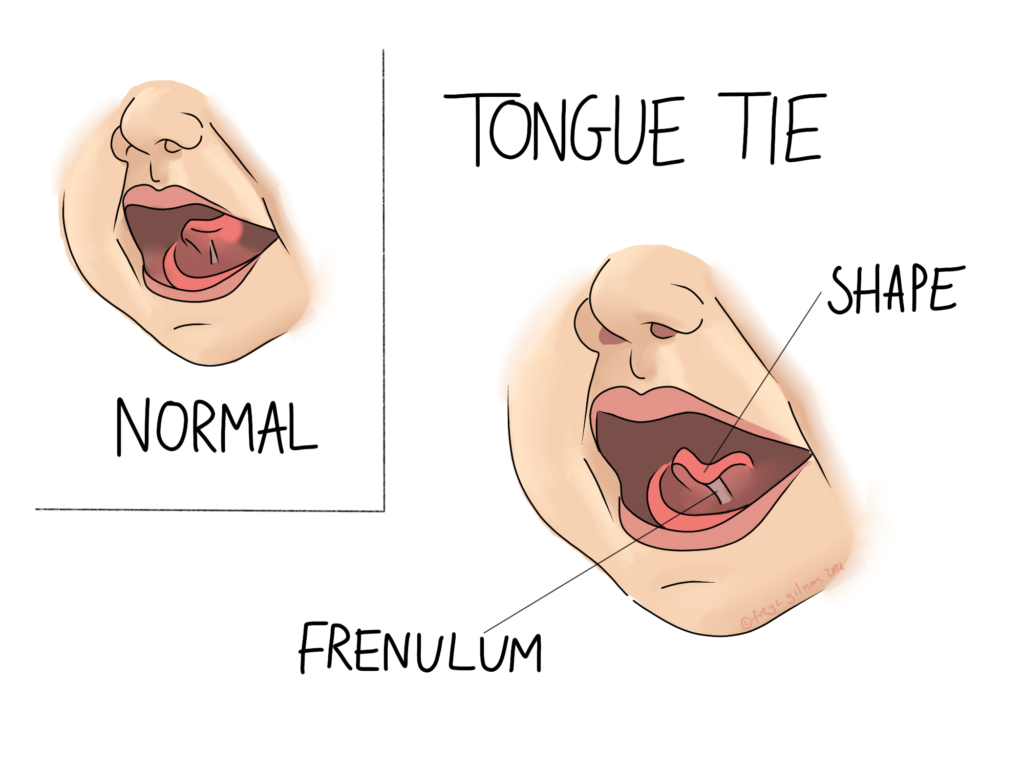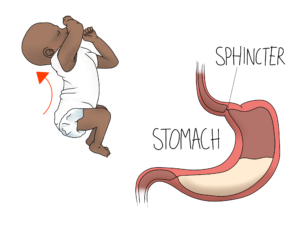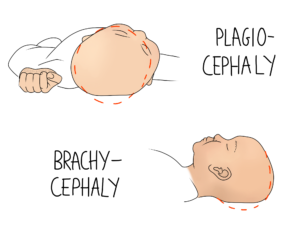Some babies are born with reduced mobility in their tongue. This can make feeding inefficient, and painful for the mother if breastfeeding. The cause of a tongue tie is a short or thick frenulum, which is the tissue that connects the tongue to the base of the mouth.
Diagnosing Tongue Tie
In some cases, diagnosis is clear because the symptoms are so obvious. If the frenulum is very restrictive, especially at the front of the tongue, movement may be visibly diminished even when crying. We expect the tongue to raise when the baby cries with an open mouth. More severe cases will come with a “heart shaped” tongue on this movement. The centre of the tongue cannot lift, so only the sides raise as normal, and a valley is left in the centre.
Other signs and symptoms that may be present include:
- Failure to clear milk from the tongue. This leaves a white layer that may be mistaken for thrush
- Noisy feeding at breast or bottle
- Taking on a lot of air at feeds, gassiness
- Short and frequent feeding
- Lip tie (restriction of the lip due to a short frenulum between lip and gum)
As tongue tie is associated with inefficient feeding, slow weight gain is also possible. Bathroom scales are not precise enough for weighing a baby, so ask your health visitor for a weigh-in if you are concerned.
Treatment Options
The NHS recommends conservative treatment where possible. Massage techniques are within your osteopath’s remit, and in some cases this will suffice without surgery. Although the frenulum is not a muscle, we can use similar techniques to those we use for muscles. This involves direct work within your baby’s mouth, typically just using fingertips. Before any treatment is carried out, your osteopath will explain what they want to do and gain consent from you. This conversation will include risks and benefits. To maintain the benefit, you may be asked to continue similar exercises at home between treatments. We may also suggest working with another professional too. Some cases respond well to alterations in feeding, in which a lactation consultant would be best qualified to help.
In young babies, surgery can be performed without anaesthetic. This is because the nerves have not grown into the tissue like they have in older babies and beyond. Older babies may need to be put under general anaesthetic to achieve the same results.
The Bigger Picture
If feeding has been laborious, there may be additional tensions in your baby’s body. Your osteopath will look for compensatory patterns and work to resolve them too. Common problematic areas include the diaphragm and shoulders, or the neck. If the neck is involved, there may be susceptibility to developing torticollis, which is associated with plagiocephaly (or “flat head syndrome”). It’s also not unusual for one problem to lead to another. For example, taking on air during feeds can make a baby gassy. This can lead to reflux like symptoms, which make tummy time more uncomfortable, and delay some physical milestones. Your osteopath can tie all of these factors together to develop a personalised treatment plan for your baby.





